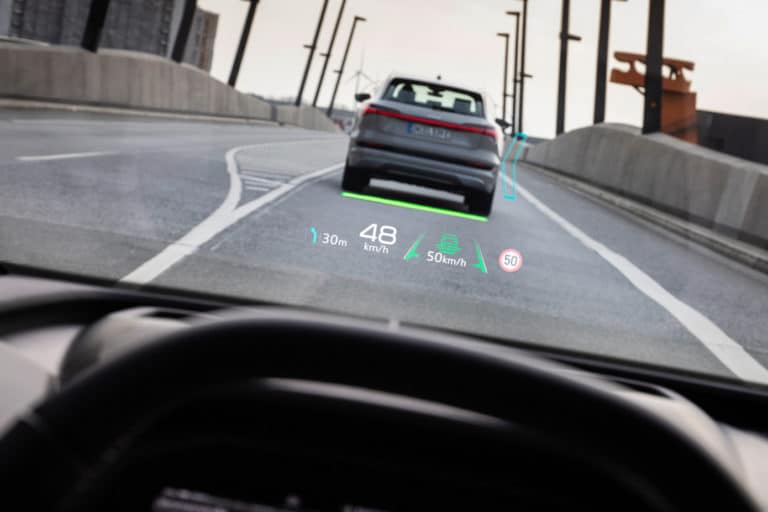
Augmented reality (AR) is shooting past its gaming roots. You can find it in use across many industries today, and that trend will only grow as the technology improves. One particular sector that could see some significant changes from AR is transportation.
Transportation is essential, whether it’s your daily commute or trucks hauling goods between manufacturers and retailers. Its many applications stand to gain a lot from broader AR adoption. Here’s how AR can change the future of transportation in all its forms.
Head-up Displays
One of the biggest impacts of AR in transportation is the technology in your car. Head-up displays (HUDs) show information like speed, navigation instructions and the current speed limit above the dashboard, so you don’t have to look away from the road. They first appeared in cars more than 30 years ago but are only recently becoming common.
Phones and many in-dashboard control panels can display this information, but you must look down to see it. That can be dangerous, especially if you’re in heavy traffic, an unfamiliar area or poor driving conditions. An AR-powered HUD removes those concerns by giving you all the data you need directly in your view of the road.
This will become more affordable and compact as AR tech improves, making HUDs standard across more vehicles. The rise of 5G will also make AR features more widespread, bringing new functionality and connectivity to these gadgets.
Easier Maintenance
AR could also improve vehicle maintenance. Some industries like construction and manufacturing use smart glasses to display step-by-step instructions or critical information as employees work. The same technology could help you diagnose and address the issue when your car breaks down.
Sometimes, a simple fix is all you need to get your car in shape to drive to a garage for bigger repairs. AR glasses could guide you through basic maintenance steps to minimize the stress and time of a breakdown. Alternatively, it could show you what the problem is so you can describe your situation to a mechanic more effectively.
Basic maintenance may become complex as cars get more complicated. AR could provide the necessary information to make routine repair know-how more accessible.
Training for Transportation Employees
Similarly, AR can help train new employees in the transportation sector. Many automakers are transitioning to fully electric vehicles, which may require some retraining for workers to adapt to these new models. Many manufacturers also see high turnover, requiring faster onboarding to get people up to speed. AR provides a solution.
Automakers can use AR to create virtual training programs before new hires get their hands on physical equipment. Alternatively, they could use smart glasses to show recruits important information as they get used to the workflow.
This quick and engaging access to information helps train employees better and faster. That way, automakers can overcome labor issues and adapt to changing demands in the consumer car market.
Smart Glasses in Warehouses
Warehouses are another important part of the transportation sector. Picking, where workers find products on shelves to bring to shipping bays, is one of these facilities’ most central but often inefficient workflows. Smart glasses can help improve it.
AR glasses can scan packages to help workers find what they’re looking for faster. Similarly, they can show navigation steps to guide employees to the products they need to pick. These improvements reduce the confusion and manual work you usually see in picking, improving speed and accuracy.
DHL experienced these benefits firsthand after experimenting with a smart glasses-based picking system. The global shipper found the AR system boosted productivity by 15%, improved accuracy rates, and halved onboarding time.
AR Could Make Big Waves in Transportation
Transportation is far from the only industry to benefit from AR, but the technology’s potential in the sector is significant. The world has likely just started to understand what AR in transportation offers. As technology improves and more companies adopt it, you could see more use cases and impressive results.
AR technology is already starting to disrupt the transportation sector, and it’s still relatively new. It may be on the fringes of the industry now, but it could redefine it in the future. The full impact of AR on transportation is still uncertain, but it’ll likely be substantial.
 Devin Partida is Editor-in-Chief at ReHack Magazine and editorial contributor at AR Insider. See her work here and follow her @rehackmagazine.
Devin Partida is Editor-in-Chief at ReHack Magazine and editorial contributor at AR Insider. See her work here and follow her @rehackmagazine.

